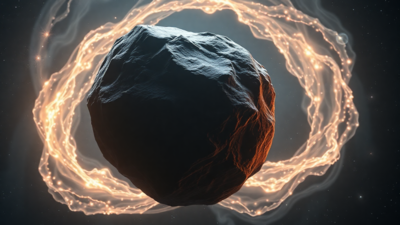On Christmas Day 2024, an asteroid nearly the size of a football field silently slipped past Earth, coming within twice the distance of the Moon. Just two days later, astronomers peering through a Chilean telescope noticed something disconcerting: this space rock, now designated 2024 YR4, might not miss us next time.
Since then, its trajectory has set off a flurry of calculations, scientific scrutiny, and, in some corners, existential anxiety. According to Nasa and the European Space Agency (ESA), there is now a 1.6% chance that this asteroid could collide with Earth on December 22, 2032. While the odds remain low, they are high enough to put 2024 YR4 at the top of ESA’s asteroid risk list, and to compel nations—including China—to begin preparing for the worst-case scenario.
What would a strike look like?
If 2024 YR4 were to hit, it would not trigger a global catastrophe, but the consequences would be devastating at a local level. Scientists categorize this type of asteroid as a “city-killer.” The explosion from its impact or atmospheric detonation could release energy equivalent to eight megatons of TNT—roughly 500 times the power of the Hiroshima bomb.
Historical comparisons are chilling. In 1908, an asteroid or comet fragment measuring about 30–50 meters exploded over Siberia in what became known as the Tunguska Event. The blast leveled 80 million trees across an area larger than Tokyo. If a similar explosion occurred over a major city today, the consequences would be catastrophic.
The asteroid’s projected impact zone, should it hit, spans vast and densely populated areas, including the eastern Pacific, South America, Africa, the Atlantic Ocean, the Arabian Sea, and parts of South Asia. Even an oceanic impact could be perilous, potentially triggering tsunamis and widespread coastal damage.
China steps up planetary defense
As per a South China Morning Post report, China has begun assembling a planetary defense team to prepare for potential asteroid threats. A recruitment notice from the country’s State Administration of Science, Technology, and Industry for National Defense lists three positions dedicated to asteroid monitoring and early warning research.
“In the future, we must not only comprehensively strengthen equipment configuration and performance but also cultivate a team of talent dedicated to asteroid defense,” said Li Mingtao, a researcher at the Chinese Academy of Science’s National Space Science Center.
The Chinese government has already unveiled a conceptual plan for its first planetary defense mission. Slated for the early 2030s, the mission would deploy a spacecraft to observe and then alter the trajectory of a threatening asteroid—a strategy reminiscent of Nasa’s successful 2022 DART mission, which deliberately crashed a probe into an asteroid to shift its path, the SCMP report said.
A matter of time and observation
Despite the flurry of activity, many scientists remain calm. History suggests that as more observations refine our understanding of 2024 YR4’s orbit, the impact probability may drop to zero—just as it did with the asteroid Apophis, once thought to pose a real threat to Earth in 2029.
“We are not worried at all, because of this 99 percent chance it will miss,” said Paul Chodas, director of Nasa’s Center for Near Earth Object Studies. “But it deserves attention.”
For now, the asteroid is moving away from Earth, making its next close approach in 2028. The world’s most advanced telescopes will keep tracking it, updating risk assessments in real time. Meanwhile, China, the U.S., and the broader international community must grapple with a bigger question: If a major asteroid impact is ever truly imminent, will the world be ready?
(With inputs from agencies)
